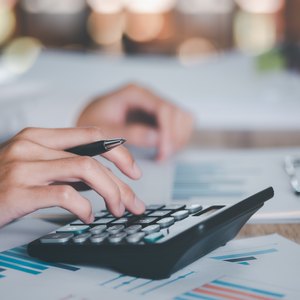
The U.S. Securities and Exchange Commission (SEC) uses generally accepted accounting principles (GAAP) as part of its accounting standards when dealing with business and associated corporate accounting rules. These rules also apply to many other for-profit and non-profit U.S. organizations, according to the CFA Institute.
The Financial Accounting Standards Board (FASB) governs the GAAP standards that guide corporate capitalization policies and depreciation rules.
The Federal Reserve Financial Accounting Manual states the following requirements for fixed assets:
- Assets should be capitalized on an individual basis using the individual asset method.
- Asset units should be easily or readily identified and provide economic benefit. In rare instances, an asset may be a composite of components.
- A pooled method may be employed when assets are low-cost, bulk purchases or when allocating fixtures or furniture.
What Are Fixed Assets?
In financial accounting, fixed assets refer to tangible assets that a business may own to produce goods or services. However, these assets are limited to those businesses cannot convert easily into cash since they are meant for future benefits through long-term use. Fixed assets are also called capital assets.
Fixed assets come in three primary assets types, which are usually summarized as PP&E:
- Property: These would include a business apartment for rent, land and office furniture, etc.
- Plant: These include all the real estate manufacturing facilities a company may own, etc.
- Equipment: These include each piece of equipment such as trucks and forklifts for product transportation and delivery, manufacturing machinery, etc.
How to Depreciate Fixed Assets
Depreciation is recorded monthly as a depreciation expense and is also recorded as accumulated depreciation. This will be done across the useful life of the asset. For example, using the straight-line method for office furniture, that length of time would be seven years.
Depreciation does not apply to land, though cost depletion can apply. Over time, your fixed asset will acquire accumulated depreciation, the total value of depreciation charged to the expense since obtaining the asset. It increases each year until the end of the asset’s useful life.
Recording GAAP Fixed Assets
The Federal Reserve Board states that to follow GAAP, you must record fixed assets at their full acquisition costs. This will include the purchase price plus the total cost of purchasing the products (except software), insurance, transportation or warehousing expenditures and assembly or installation costs.
Say your business purchases a $5,000 piece of office furniture with a useful life of seven years and uses cash. The journal entry would include a debit to the fixed asset account for $5,000 and credit to the cash account for $5,000.
Considering no salvage value, using the straight-line method would result in monthly depreciation of $59.52 for 84 months before the asset is fully depreciated. This is how you will track the book value of this asset.
When recording GAAP fixed assets, Harvard Business School indicates that you will list them under noncurrent assets, which come after the current assets category in your balance sheet. And you will do so by labeling them as PP&E. Your fixed asset’s accumulated depreciation value will show up under the PP&E line in that same section and sheet.
What Is the Straight-Line Method?
Below is the procedure for accounting for GAAP fixed assets using straight-line depreciation.
Write down a list of all your fixed asset types and record their values on their purchase dates as individual journal entries. Debit the asset account with the value of the fixed assets. And also credit the cash for similar values.
If you made upgrades to the fixed asset, calculate its new value. And then debit that value increase to the fixed asset account while crediting the cash section with a similar amount.
Using straight-line depreciation, calculate the accumulated depreciation by subtracting the final trade-in cost of your fixed asset from its full acquisition cost and then dividing the result by its useful life.
If you choose to sell the fixed asset at salvage value, you will debit the total cash sale amount and accumulated depreciation. In addition, you would credit the fixed asset full acquisition cost. If you sold the asset at a price higher than the original fair value, you should also credit the gain. But if you made a loss, you should debit it.
Straight-Line Depreciation Method Example
Suppose you bought a truck at $20,000 and improved it by $1,000. Its total acquisition cost is $21,000. And then you choose to assign it a useful life of seven years, after which its estimated trade-in value will be $7,000. In that case, it will depreciate by ($21,000-$7,000)/7 = $2,000 per year.
If you are accounting for accumulated depreciation, you will debit depreciation and credit accumulated depreciation each financial year at $2,000. And after one year, the truck will have a value of $19,000. In year two, the truck would have a value of $17,000 while the accumulated depreciation would increase to $4,000, etc.
So, to find out the net value of fixed assets at any point, you have to subtract the total accumulated depreciation from the property, plant and equipment values under the assets category within any financial report. Depreciation expenses go on the income statement, one of the three business financial statements.
References
Writer Bio
I hold a BS in Computer Science and have been a freelance writer since 2011. When I am not writing, I enjoy reading, watching cooking and lifestyle shows, and fantasizing about world travels.

